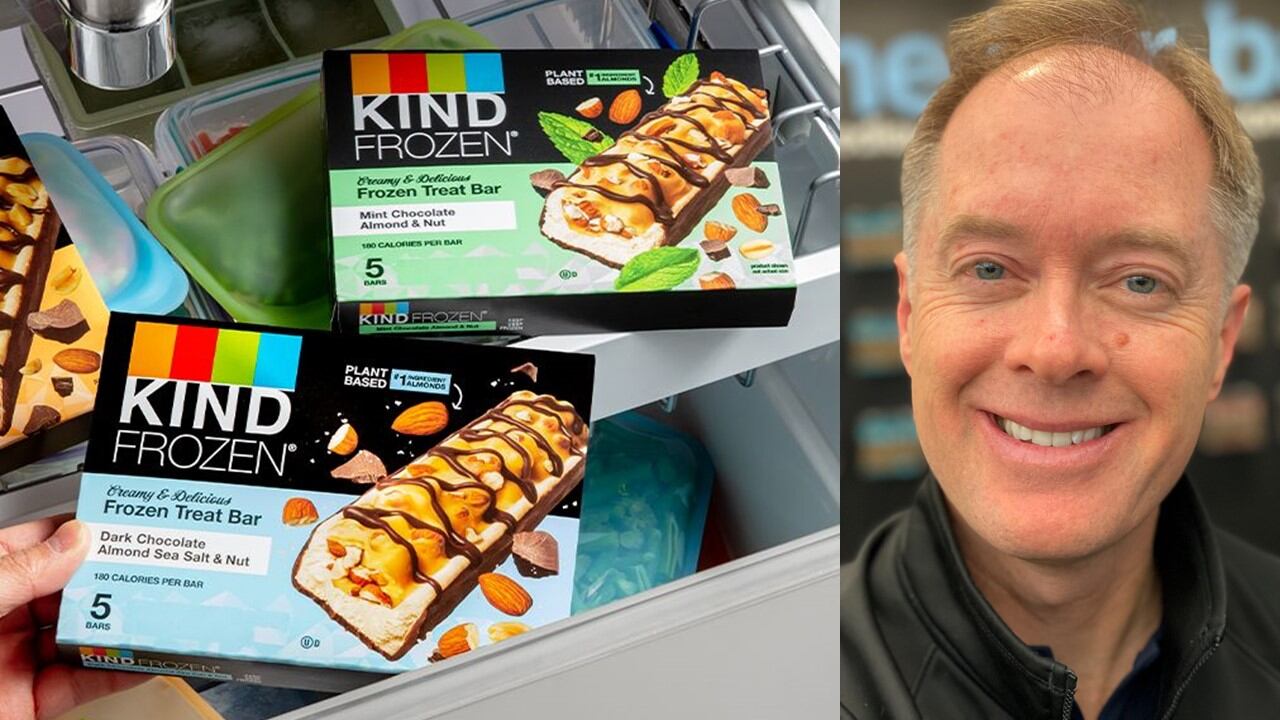Yesterday, the snack brand unveiled its KIND Almond Acres Initiative – a three-year pilot project in which it will work with the California Water Action Collaboration, UC Davis and ingredient supplier Olam Food Ingredients to test five regenerative agriculture practices and new technologies on 500 acres of OFI’s almond orchards in California.
The initiative is part of a larger commitment also announced by KIND this week to source 100% of its almonds from orchards leveraging regenerative agriculture practices on a mass balance basis by 2030, and a previously announced commitment to source all of its almonds from “bee-friendly farms” by 2025.
In the spirit of a “rising tide raises all boats,” Elizabeth Jacobsen, global technical sustainability director for the health & wellness platform at Mars explained to FoodNavigator-USA that KIND wants to be transparent about its progress towards both commitments to help others in industry potentially follow suit, and to better engage with consumers who increasingly worry about the environmental impact of the products they and who are seeking more transparency around how ingredients are sourced.
‘KIND consumers are very interested in sustainability’
To this end, KIND is leaning into immersive digital activations that allow consumers and other industry stakeholders to “visit” the Almond Acres Initiative and an interactive landing page where KIND will track its progress and share details about the practices and technologies it is testing. Playful Snapchat filters that transform users into a talking almond or bee also help make learning fun – and could help the initiative (and KIND) go viral.
“KIND consumers are very interested in sustainability and when we previously talked about our Bee Friendly and our Bee-day Bash in the past, they were some of our most successful events and grew a ton of engagement from KIND consumers. So, that was the foundation of [these digital activations] … and what led us to be a little bit more aggressive and find other opportunities to engage consumers,” Caitlin Birkholz, regenerative agriculture pillar lead at KIND, told FoodNavigator-USA.
She added, “It is very exciting to teach consumers about how food is grown and where it comes from,” and while a lot of companies in general are exploring regenerative agriculture it is a difficult concept to explain to consumers – especially in bite-sized marketing pieces.
KIND’s interactive virtual reality website, however, makes learning fun and breaks down complicated topics, she said.
Through the website “visitors will be able to click on different parts of the Almond Acres Initiative orchard to learn a little bit more about the practices, why they are important, what is actually happening and learn about what regenerative agriculture is as they go,” she added.
Virtual and augmented reality offer an “incredible opportunity to bridge what is happening behind the scenes with consumers’ appetite” to learn more about KIND’s environmental sustainability efforts, Birkholz said.
KIND’s Almond Acres Initiative will test 5 practices
Working with its almond supplier OFI, KIND’s Almond Acres initiative will text three standard regenerative agricultural practices and two technologies that Birkholz said could boost the benefits of the other practices.
She explained KIND selected whole orchard recycling, cover crops and compost/biochard application to help increase soil health and water holding capacity, the benefits of which should be magnified by subsurface irrigation. Finally, the partners will test an off-ground harvester, which has been used for other nuts, and should reduce soil disturbance and the amount of dust in the air during harvest – improving air quality and carbon sequestration.
The company decided to test the practices in its almond supply chain because almonds are its No. 1 ingredient, have a bad rap as being unsustainable because they require a lot of water and are often grown in areas prone to drought and because this is where KIND’s team believed they could make the biggest impact, Jacobsen explained.
“We know that almonds are a thirsty crop and in the court of public opinion, the first thing that consumers and folks often think about when we hear about almonds and start to talk about sustainability is that almonds take a lot of water. So, we really sat back with our purchasing team to understand why are almonds grown in areas [where droughts are a risk],” and how can we help minimize that risk, she said.
By testing, learning and sharing different ways to reduce water use and improve the sustainability of almonds, she added, KIND not only helps the planet but acknowledges and engages with consumers about their concerns and shows how KIND is mitigating risks, she added.
Improving sustainability beyond the farm
KIND’s commitments to help farms become more bee-friendly and sustainable through regenerative agricultural practices are only one facet of the company’s efforts to become more environmentally responsible.
The company also is focused on how it can reduce the impact of its packaging, “which is probably no surprise for a consumer packaged goods brand,” said Jacobsen.
One option the company is testing is a paper wrapper that launched in March limited quantities for a limited time on the company’s website as part of the company’s larger effort to make all its packaging reusable, recyclable or compostable and to reduce its single-use plastic overall.
The paper-based wrapper, made form 78% paper, meets the company’s standards for safety and quality, which is especially high given the products it makes do not have preservatives in them and therefore rely on that packaging for freshness, Jabobsen said.
Changes like these are expensive to undertake and the return on investment can be hard to measure, but Jacobsen said at some point there is a cost for inaction that must be considered.
“If brands don’t do things like, if they don’t progress to support their image and the values that they portray, they’re at risk of being eclipsed by other brands that aren’t delivering that. So, the way we look at the upside is we also look at the downside and ask ourselves, ‘What is the right thing to do?’… Because as a purpose driven brand, we’re really about doing the right thing as well – not just about the numbers,” she said.




